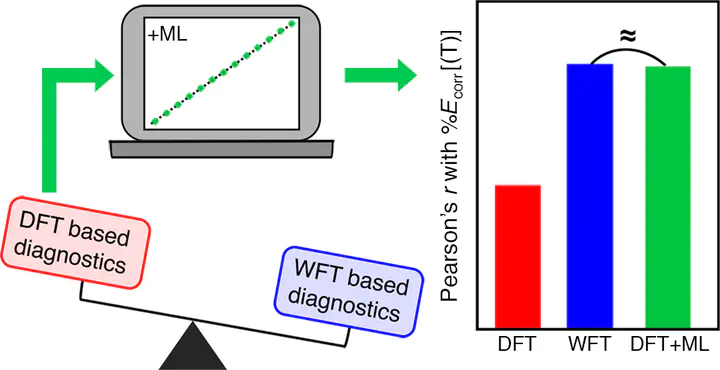Data-Driven Approaches Can Overcome the Cost–Accuracy Trade-Off in Multireference Diagnostics

Abstract
High-throughput computational screening typically employs methods (i.e., density functional theory or DFT) that can fail to describe challenging molecules, such as those with strongly correlated electronic structure. In such cases, multireference (MR) correlated wavefunction theory (WFT) would be the appropriate choice but remains more challenging to carry out and automate than single-reference (SR) WFT or DFT. Numerous diagnostics have been proposed for identifying when MR character is likely to have an effect on the predictive power of SR calculations, but conflicting conclusions about diagnostic performance have been reached on small data sets. We compute 15 MR diagnostics, ranging from affordable DFT-based to more costly MR-WFT-based diagnostics, on a set of 3165 equilibrium and distorted small organic molecules containing up to six heavy atoms. Conflicting MR character assignments and low pairwise linear correlations among diagnostics are also observed over this set. We evaluate the ability of existing diagnostics to predict the percent recovery of the correlation energy, %Ecorr. None of the DFT-based diagnostics are nearly as predictive of %Ecorr as the best WFT-based diagnostics. To overcome the limitation of this cost–accuracy trade-off, we develop machine learning (ML, i.e., kernel ridge regression) models to predict WFT-based diagnostics from a combination of DFT-based diagnostics and a new, size-independent 3D geometric representation. The ML-predicted diagnostics correlate as well with MR effects as their computed (i.e., with WFT) values, significantly improving over the DFT-based diagnostics on which the models were trained. These ML models thus provide a promising approach to improve upon DFT-based diagnostic accuracy while remaining suitably low cost for high-throughput screening.